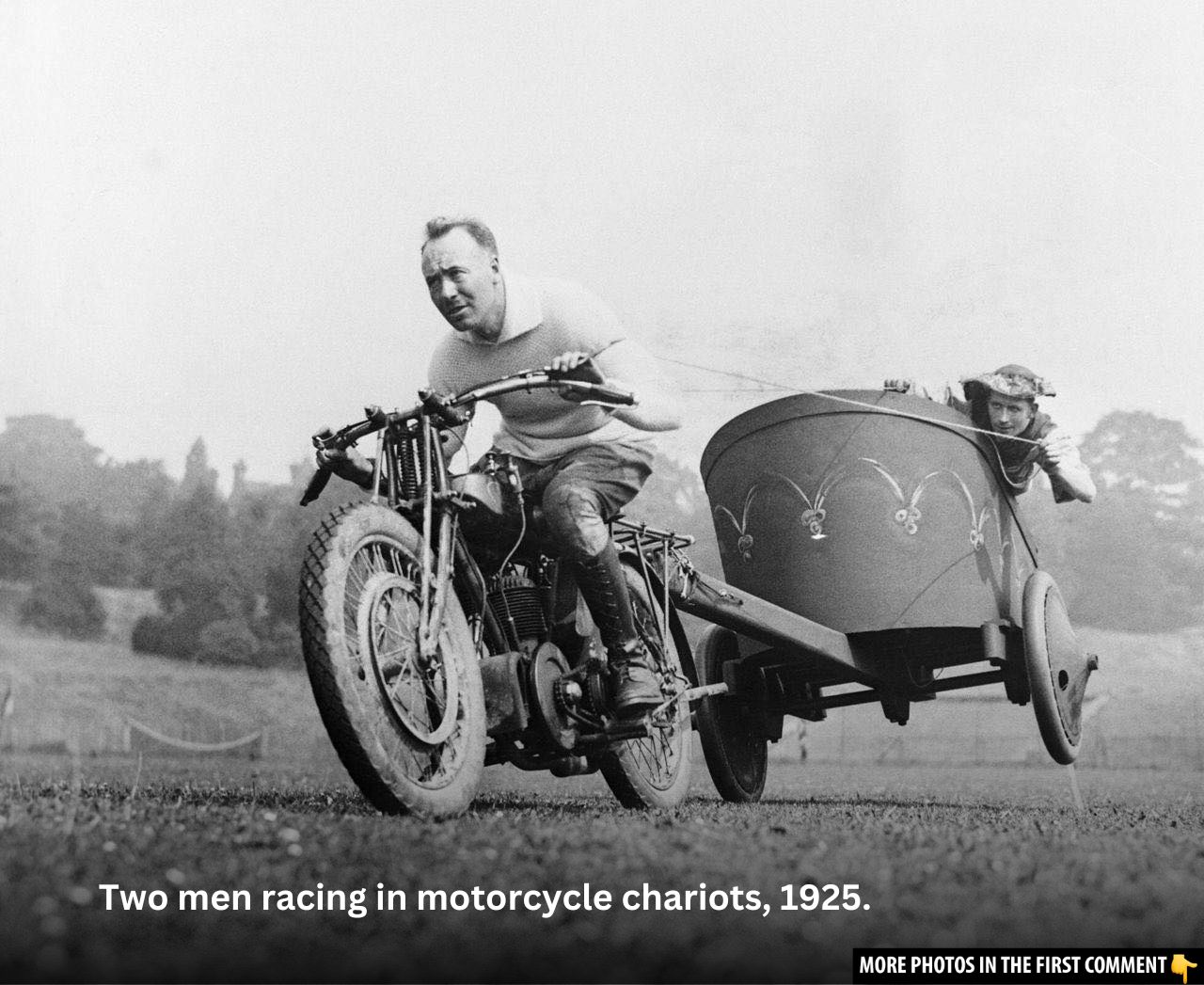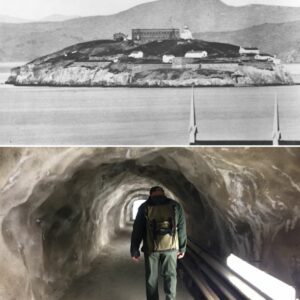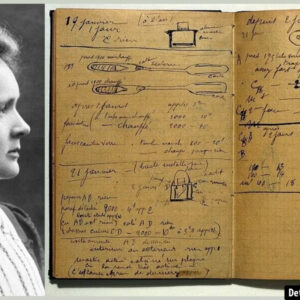Imagine the thrill of ancient chariot races, reimagined for the modern world—this time, with roaring motorcycles instead of galloping horses. In the early 20th century, a daring group of racers revived the long-forgotten sport with a twist that captured the public’s imagination. These rare photos from the 1920s and 1930s showcase the adrenaline-fueled spectacle of motorcycle chariot racing, a fusion of speed, danger, and cinematic flair that took the world by storm.
The Origins of Chariot Racing: From Ancient Olympics to Modern Recreation
Chariot racing has a long and illustrious history, dating back to ancient civilizations, particularly in Greece and Rome. The ancient Olympic Games, held every four years in Olympia, Greece, featured chariot racing as one of the most thrilling events. Chariots, typically drawn by horses, raced around a track called a hippodrome, with drivers competing fiercely for victory. These races were dangerous, and many drivers and horses met with fatal accidents.
Chariot racing became synonymous with the gladiatorial spectacles in ancient Rome, where the sport reached its peak in popularity. The Romans added their own flavor, organizing massive, dangerous races in the Circus Maximus, where spectators cheered for their favorite chariots, sometimes even wagering on the outcomes. However, after the fall of the Roman Empire, the sport of chariot racing faded into history, becoming a distant memory of a bygone era.
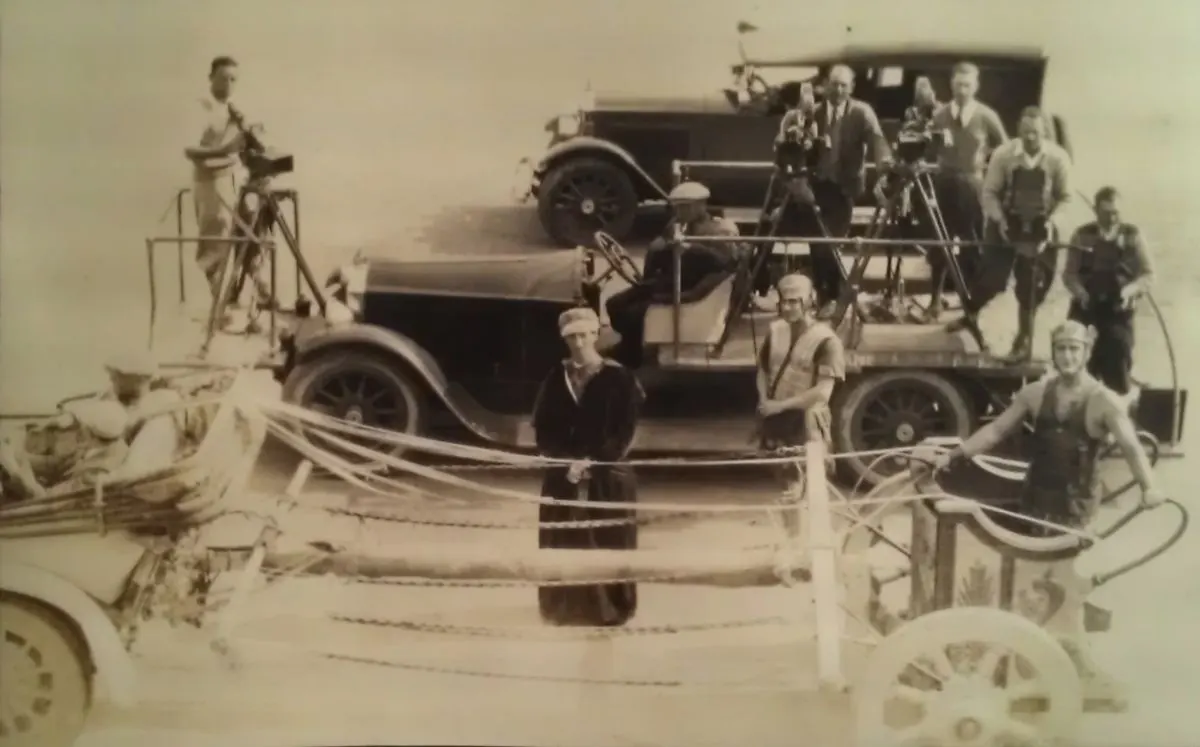
Video
Watch Motorcycle Chariot Race 1920s-1940s to experience this thrilling and unusual sport from the past. A fascinating glimpse into vintage racing history!
The Birth of Motorcycle Chariot Racing
The revival of chariot racing began with a creative twist in the 1920s when a daring group of individuals decided to merge the ancient concept with modern technology. Rather than using horses, they attached motorcycles to the front of chariots, creating a thrilling and dangerous new sport.
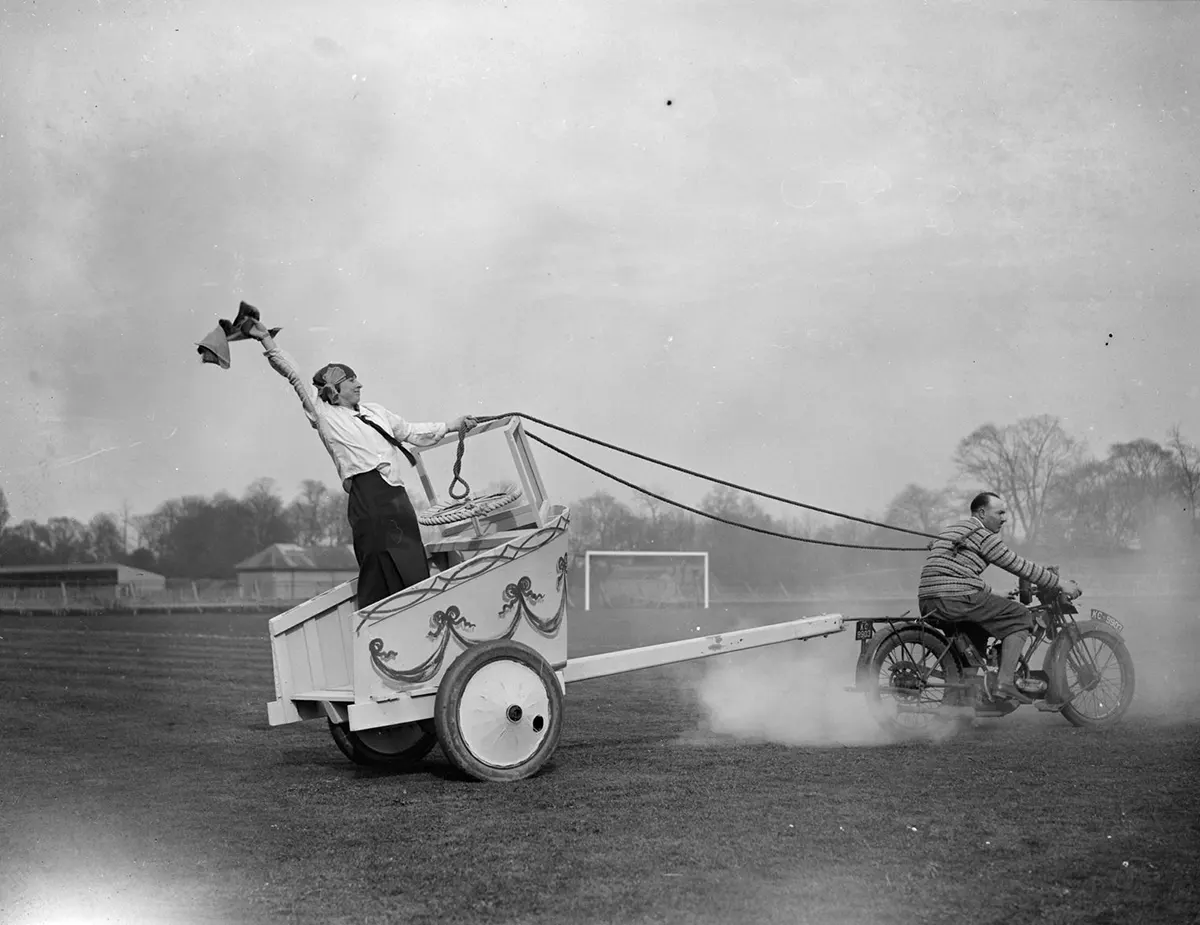
It all began after the success of the 1925 film Ben-Hur, which featured an iconic chariot race scene that captivated audiences. The film’s groundbreaking action sequences and dramatic chariot race left moviegoers desperate for more. Inspired by the film’s visual spectacle, enterprising individuals saw an opportunity to create a modern version of chariot racing. Using motorcycles instead of horses, they brought the ancient sport into the modern age.
The motorcycles were used to pull chariots, but the sport evolved quickly. Initially, the configuration featured a rider on a motorcycle pulling a chariot with a driver sitting in it. Over time, the design progressed to involve two motorcycles, controlled by a single charioteer, who steered both vehicles with reins, or sometimes even handlebars, creating a spectacle of speed, danger, and thrills.
Motorcycle Chariots in Action: Iconic Photographs from the 1920s and 1930s
Motorcycle chariot races became an instant sensation in the 1920s and 1930s, often taking place at large public events and fairs. The races were particularly popular in Europe, the United States, and Australia, where crowds flocked to watch this wild new spectacle. Photos from this era capture the excitement and peril of the races, and some have become iconic images of early 20th-century daredevilry.

One of the most well-known photographs of the sport was taken at the 1936 New South Wales Police Carnival at the Sydney Showground in Australia. Two police officers recreated the thrilling Ben-Hur chariot scene, drawing crowds and photographers alike. These images remain some of the most famous depictions of motorcycle chariot racing. Another iconic photo from England, taken in 1925, shows a man in full Roman costume riding in a chariot—further emphasizing the historical connection to the ancient chariot races that inspired the modern version of the sport.
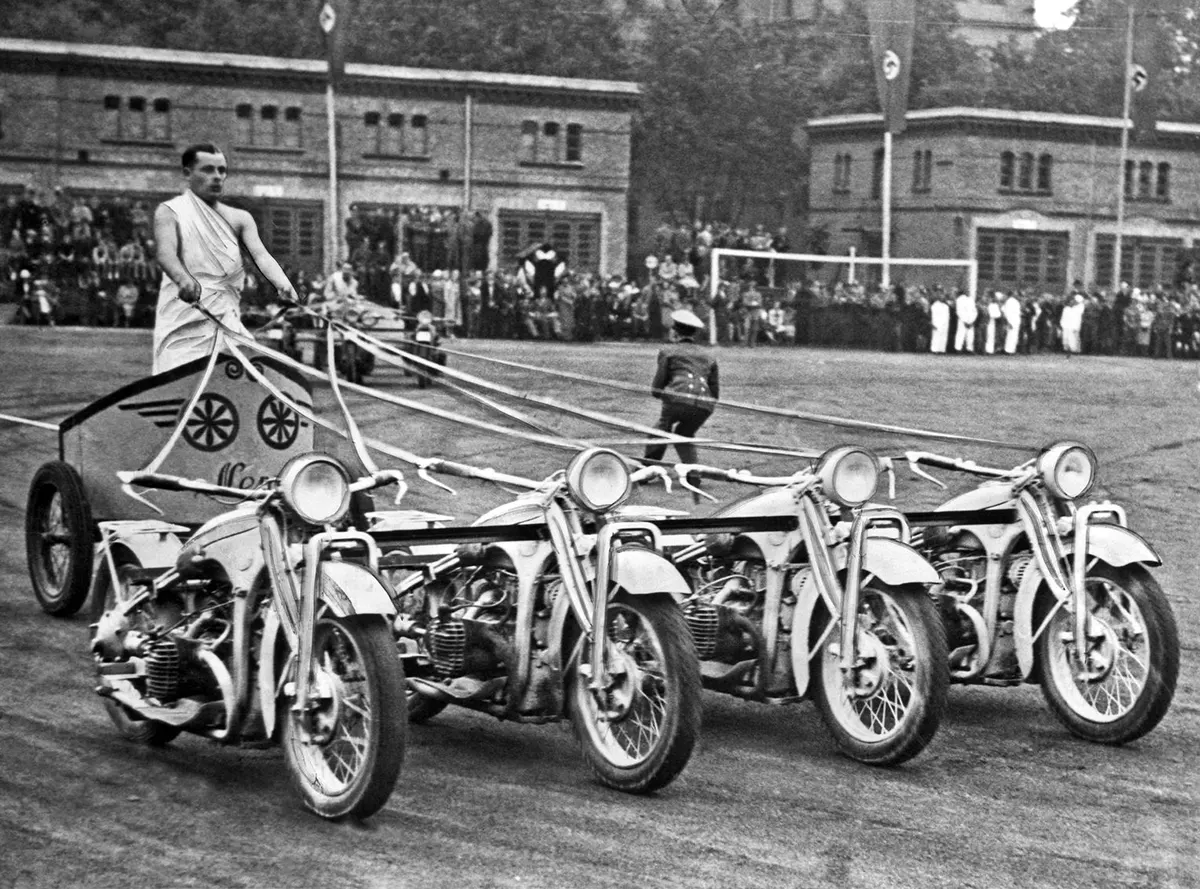
The Role of ‘Ben-Hur’ in the Motorcycle Chariot Racing Revival
The 1925 release of Ben-Hur played a pivotal role in the revival of chariot racing. The film’s famous chariot race scene captivated audiences with its fast-paced action and breathtaking stunts. The scene was so iconic that it sparked a cultural fascination with chariot racing, and soon, individuals around the world began to recreate the spectacle in real life.
While Ben-Hur is remembered as a cinematic masterpiece, it also served as the inspiration for an entire subculture of stunt racing. Moviegoers, enamored by the film’s thrilling action, were eager to see this intense and dangerous sport played out in real life. Enter motorcycle chariot races—an adrenaline-fueled recreation that allowed people to engage in their own high-speed races, mimicking the action from the film.
The Mechanics of Motorcycle Chariot Racing
The construction of the motorcycles and chariots involved in these races was as innovative as the sport itself. Initially, riders attached motorcycles to the front of traditional chariots, which were essentially ornamental. The charioteers would hold reins, which controlled the relative speed of the motorcycles, allowing them to steer the race.
Over time, the design evolved, and the races became more sophisticated. Some motorcycles had rigid extensions on their handlebars, while others relied on reins attached to the throttles for steering. This gave the charioteers greater control over the motorcycles, creating a more stable and thrilling racing experience.
The motorcycles used were typically high-performance bikes, designed to endure the harsh conditions of the track. The chariots themselves, while visually similar to those in ancient Rome, were often reinforced to handle the pressure of modern racing.
The Rise and Decline of the Sport
Motorcycle chariot racing peaked in the 1920s and 1930s, but like many popular fads, it was short-lived. The excitement surrounding the sport started to wane by the late 1930s, as the novelty wore off and safety concerns began to rise. As thrilling as the races were, the danger involved was significant, with accidents and injuries becoming more common as the sport continued to evolve.
Despite this, exhibitions of motorcycle chariot racing were still held occasionally throughout the mid-20th century, but the sport largely faded into obscurity. By the 1940s, motorcycle chariot racing was no longer a major public spectacle, and it eventually became relegated to the history books.

Legacy and Influence: The Enduring Fascination with Motorcycle Chariots
Although motorcycle chariot racing disappeared from the mainstream, its legacy lives on in various ways. The thrilling combination of motorcycles and chariots captured the imagination of many and became a part of racing history. The sport also influenced future generations of motorsport enthusiasts, many of whom still seek out dangerous and unique forms of racing.
Additionally, the sport’s cultural influence has endured, with references to motorcycle chariot racing appearing in various films, documentaries, and television series. It remains a symbol of a bygone era, a brief but exciting chapter in the history of motorsports and stunt racing.
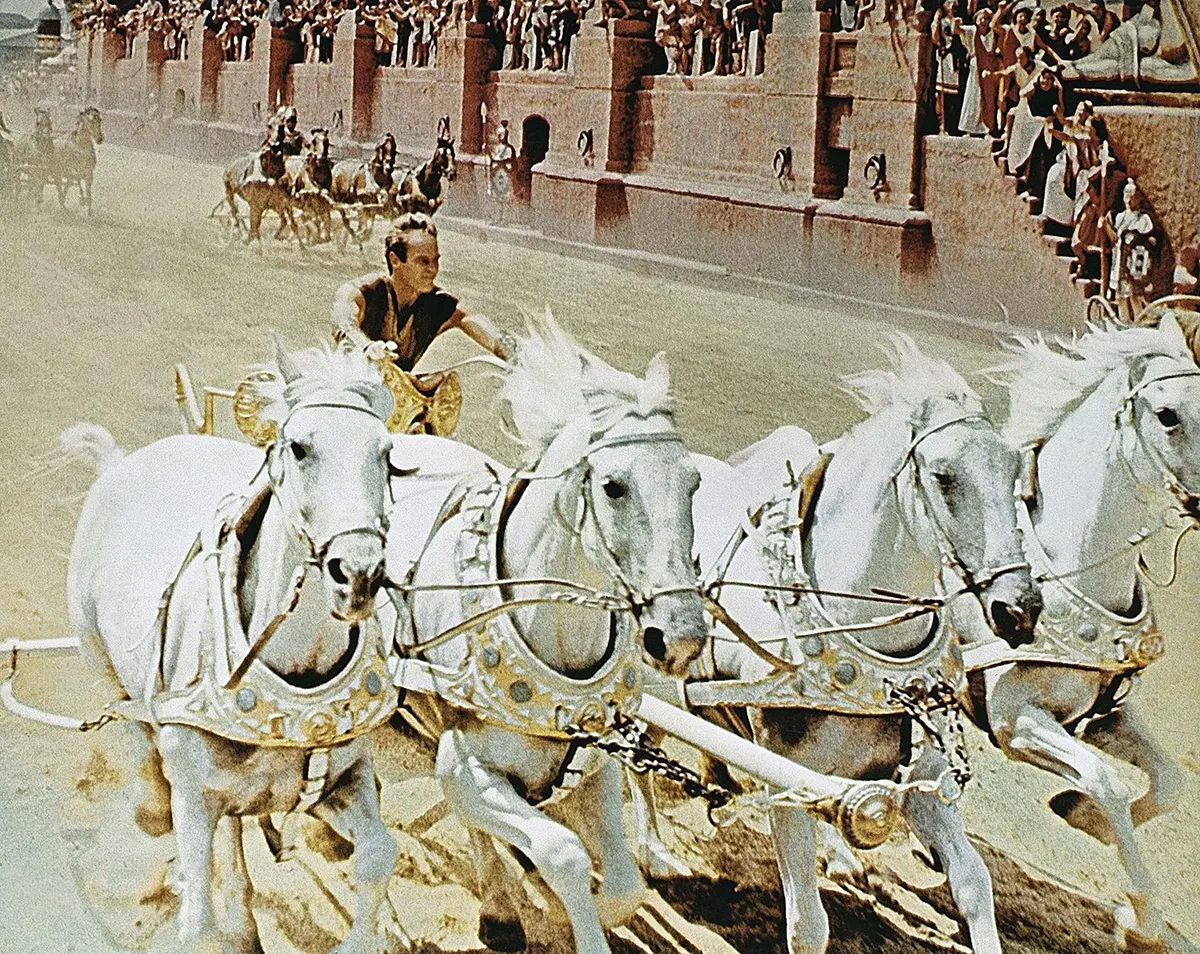
Gallery: Rare Photographs of Daredevil Motorcycle Chariot Races
To better understand the thrilling world of motorcycle chariot racing, let’s take a look at some of the rare photographs that document this incredible spectacle:

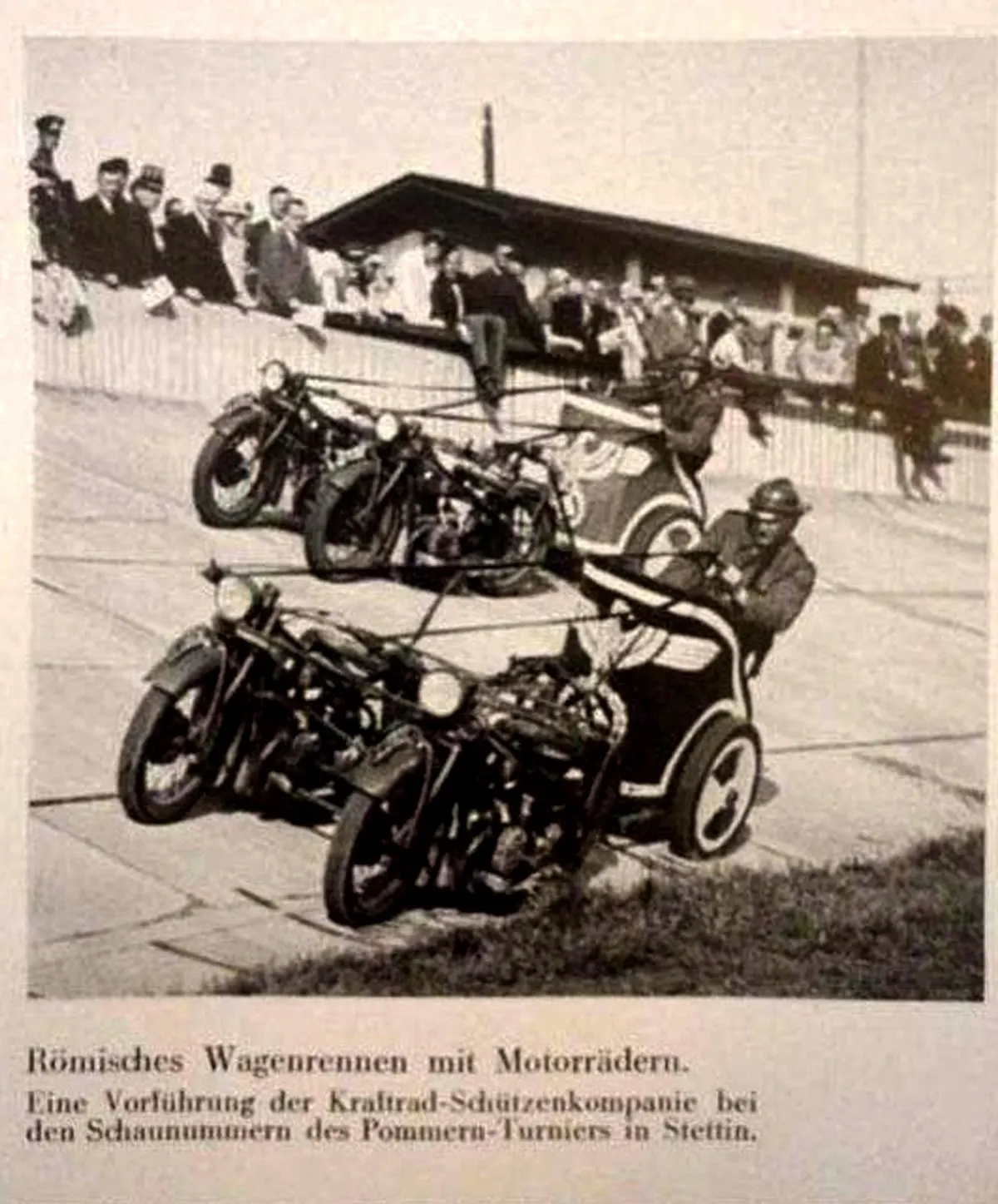




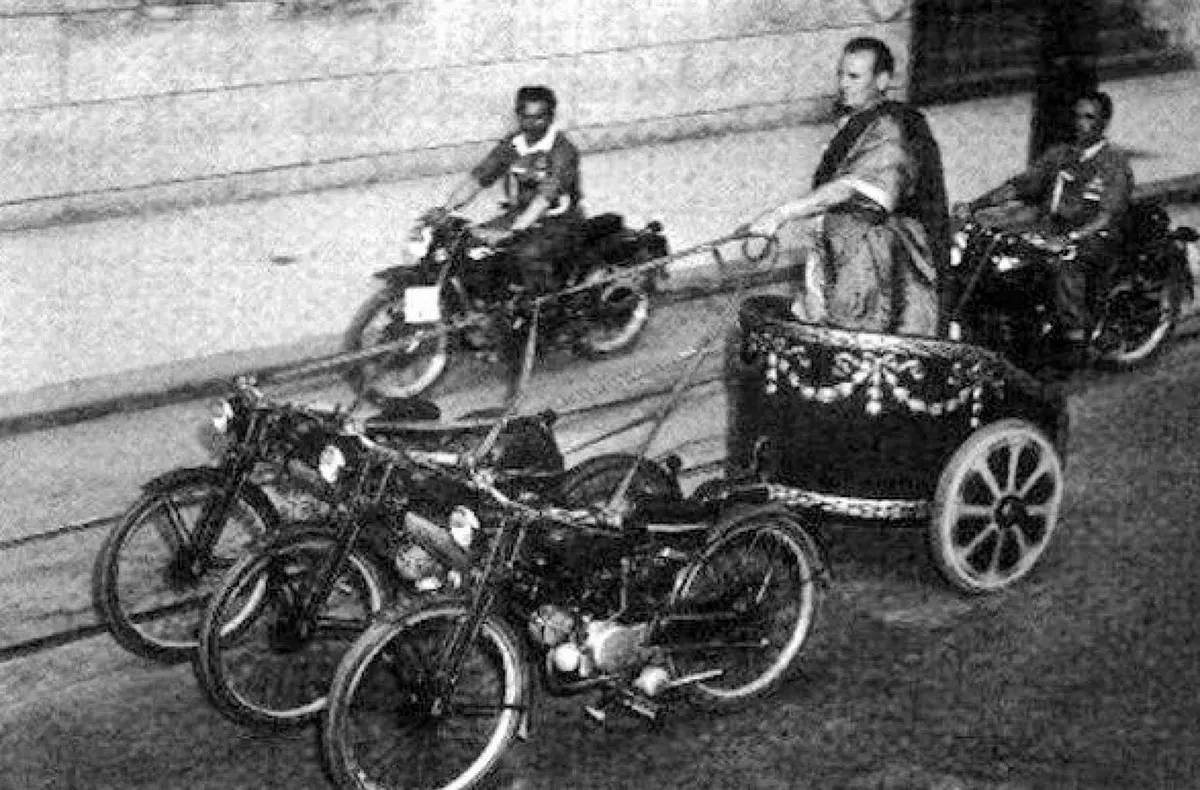
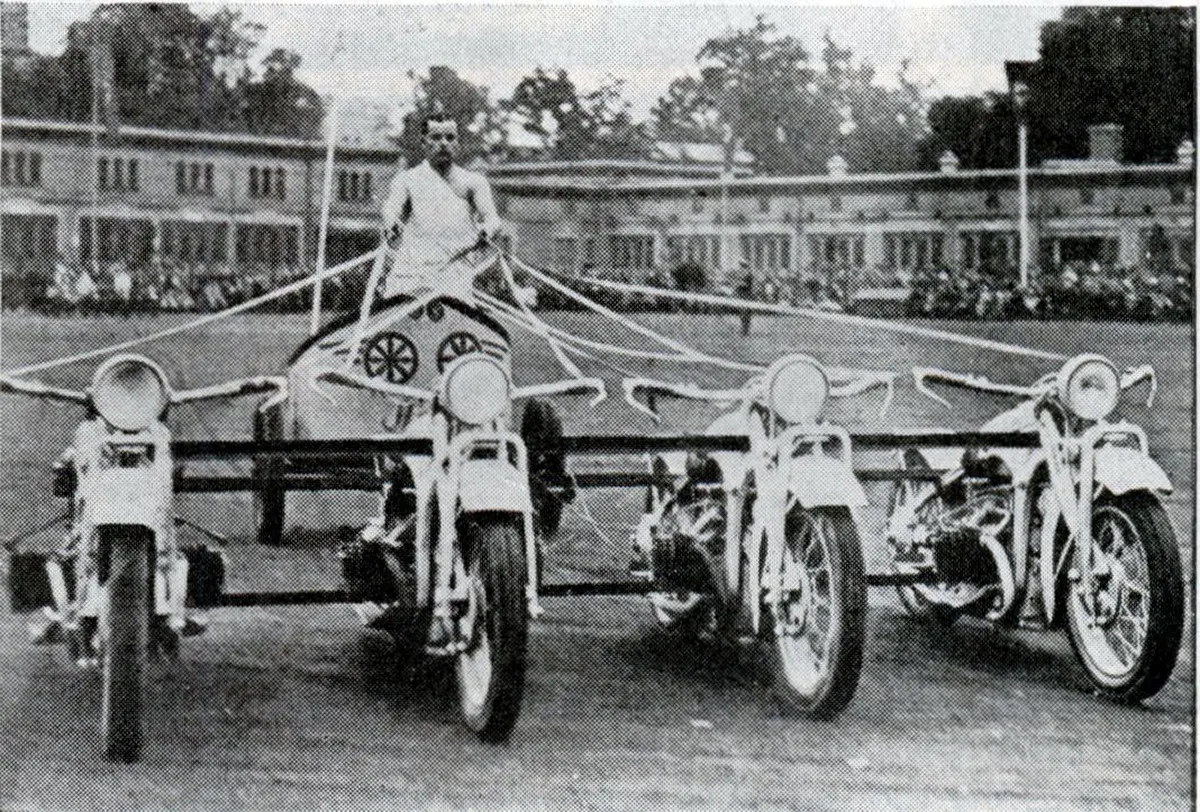
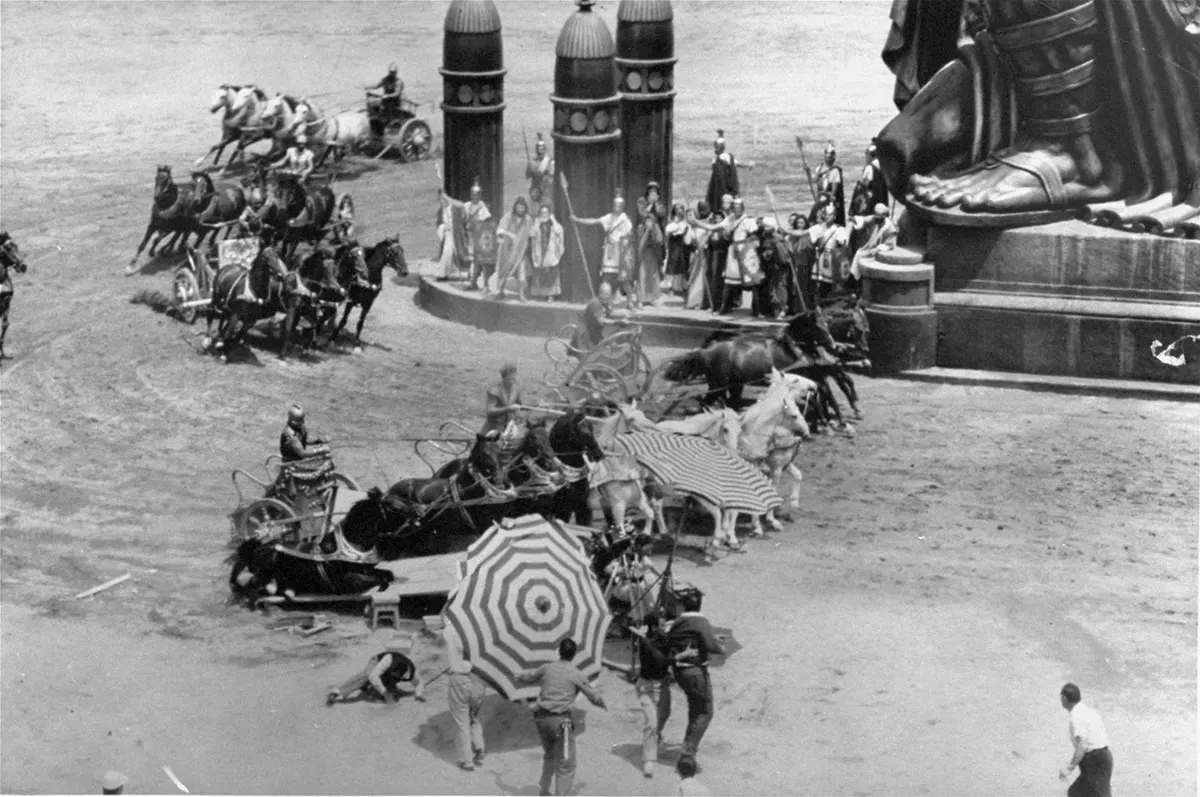
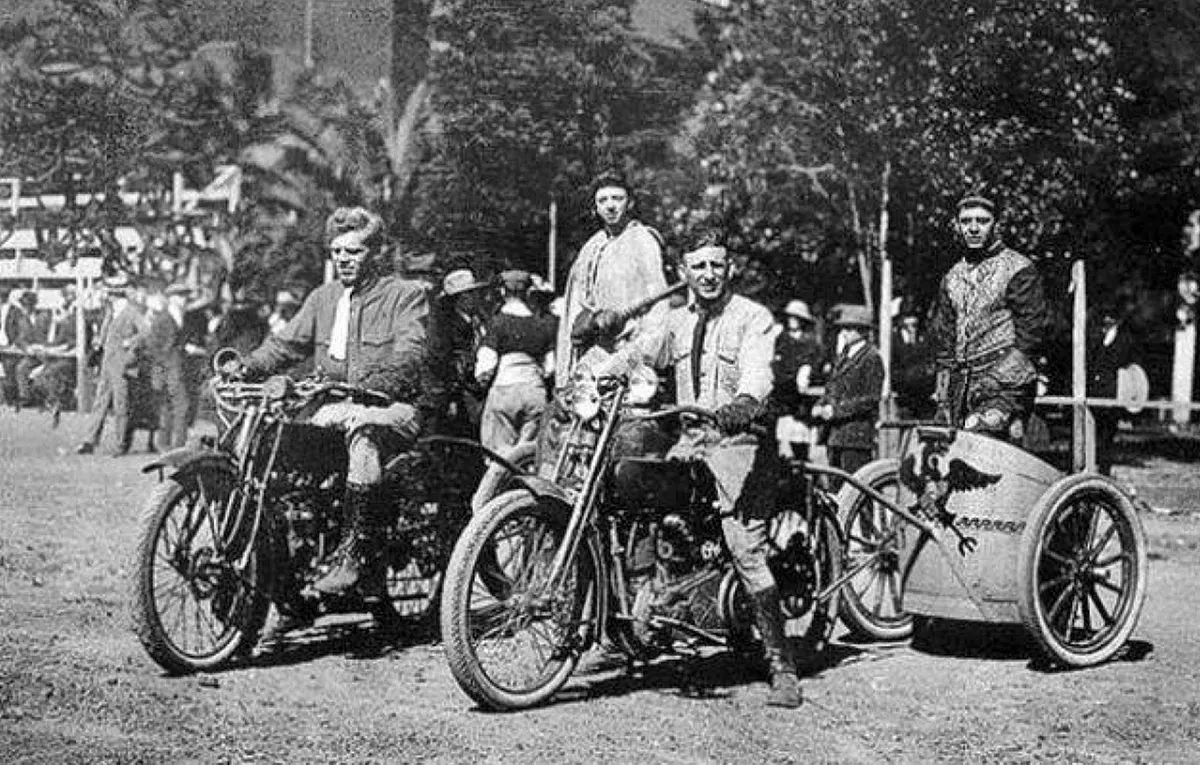
Video
Watch 150 Miles An Hour On A Motorcycle! (1930) to witness a daring motorcycle ride at incredible speeds from the 1930s. A thrilling look at early speed records!
Conclusion: The Thrill of the Past, Revisited
Motorcycle chariot racing, though short-lived, captured the adventurous spirit of the 1920s and 1930s. Combining the excitement of chariot racing with the power of motorcycles, the sport was an exhilarating spectacle that fascinated the public. Today, these rare photographs serve as a nostalgic reminder of a daring and unique chapter in motorsport history, keeping the memory of motorcycle chariot racing alive for future generations.
